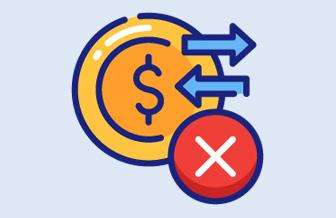Managing ACH Debit Fraud
Posted on Aug 08, 2024

Based on the 2023 AFP Payments Fraud and Control survey, 30% of organizations who responded to the survey and allowed other businesses to debit their account with ACH transactions experienced attempted or actual fraud in 2022.
What is an ACH debit?
It is an electronic transaction allowed to debit an account, often to pay bills and make payments, or to transfer funds. ACH debits are typically more reliable and efficient than paper checks because they are digital and automated. However, they do present some risks.
What kind of risks do ACH debits present?
If you are a company that allows other businesses to debit your account, it is important to know ahead of time who you have allowed to debit your account.
- Fraudsters may obtain a business’ check, then uses the listed bank routing number and account number from the bottom of that check to create an ACH transaction to debit a company’s account.
- The amount of debits may be small at first, but if the company doesn’t notice and the fraudsters are successful, they may then increase the amount of the debits.
- ACH debits must be returned the day after they are presented for settlement.
- What does this mean? If you do not notify your bank that the ACH debit is not legitimate immediately, the debit cannot be returned, and you may experience financial loss if funds have already been withdrawn.
What can you do to minimize your risk?
There are several controls companies should use to minimize the risk of ACH debit fraud.
- Block all ACH debits from most of your accounts and designate one account (or a few) that you will allow to be debited.
- Review the ACH debits that post to the designated account every day and notify the bank to return ACH debits you did not authorize immediately.
If you are interested in a product to help manage ACH debit risk, contact your banker or a banker at the nearest branch location.
Was this helpful?
Thank you for the feedback








